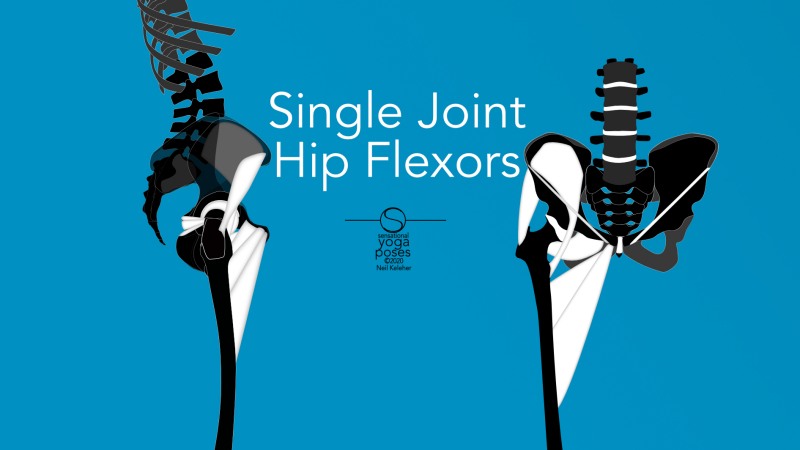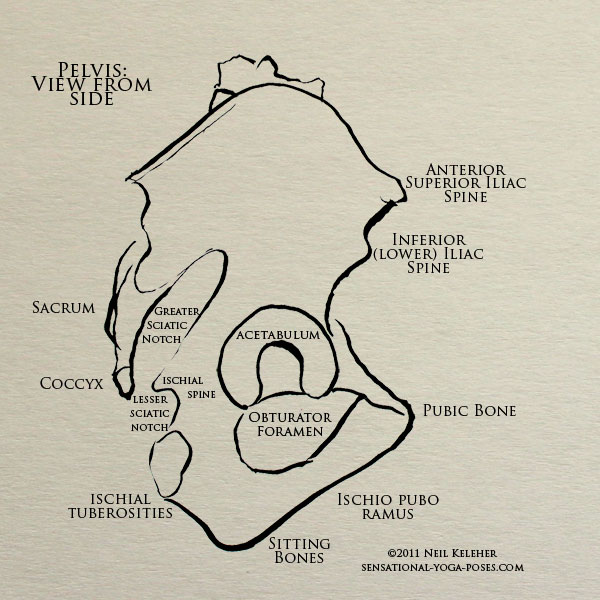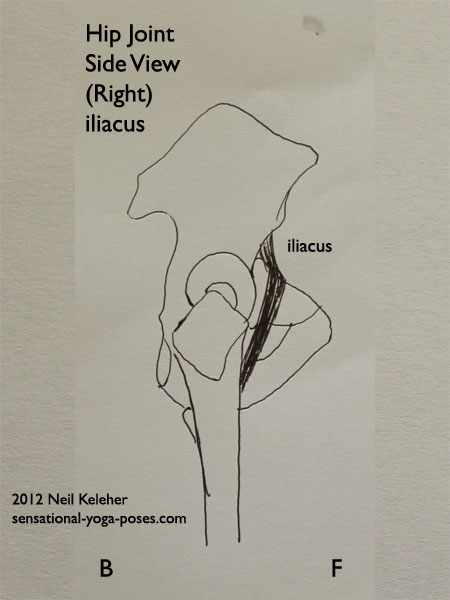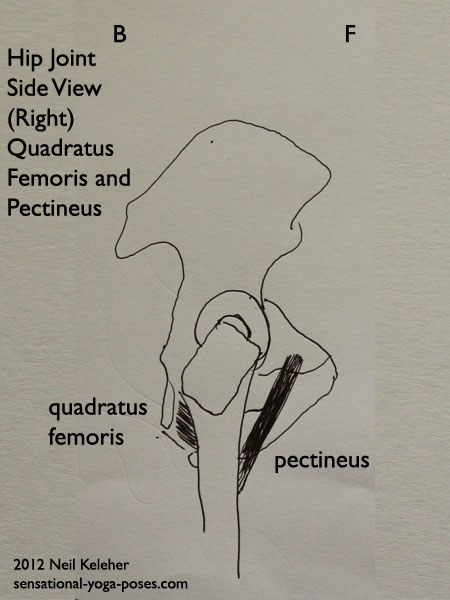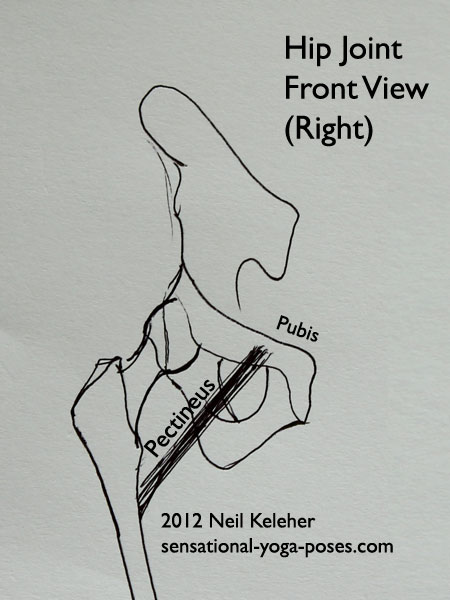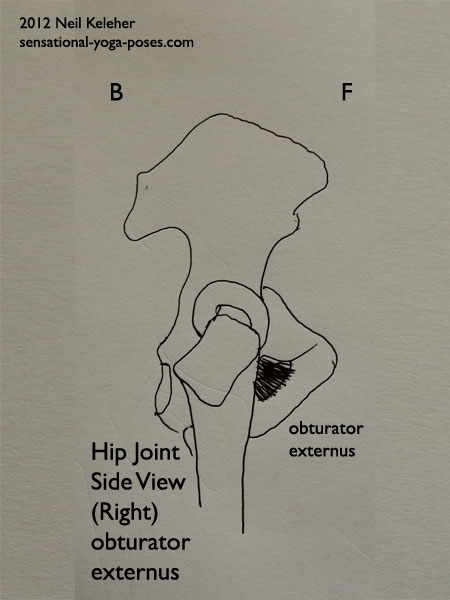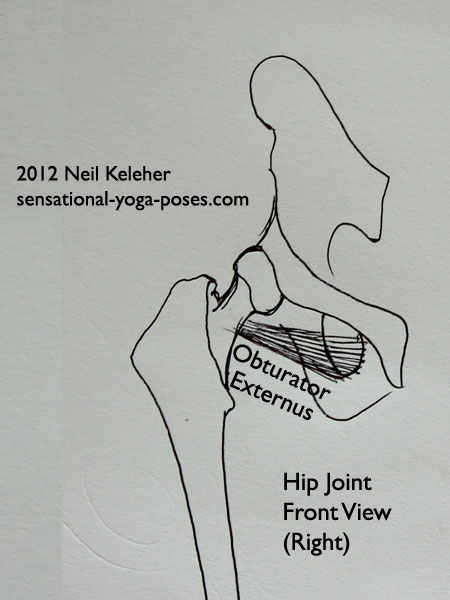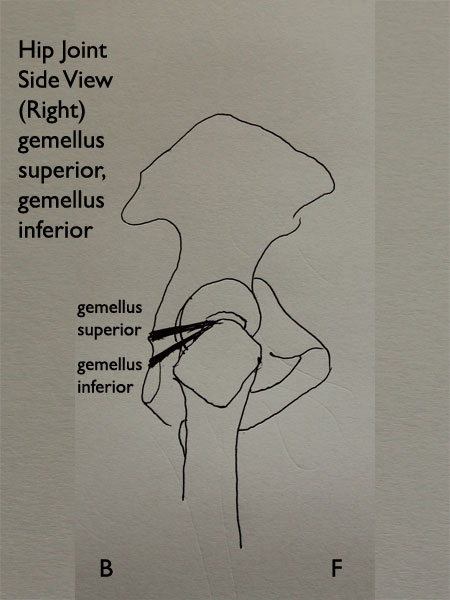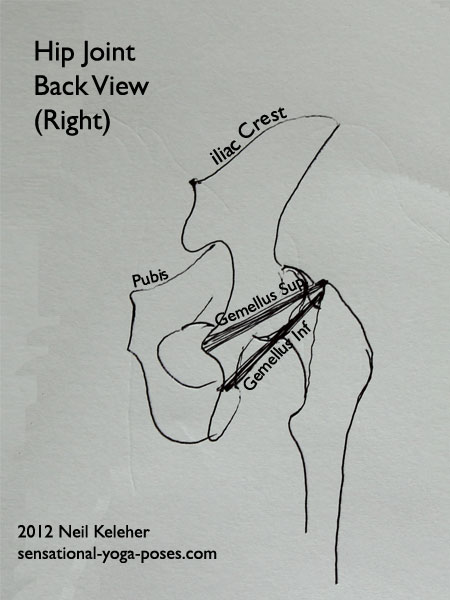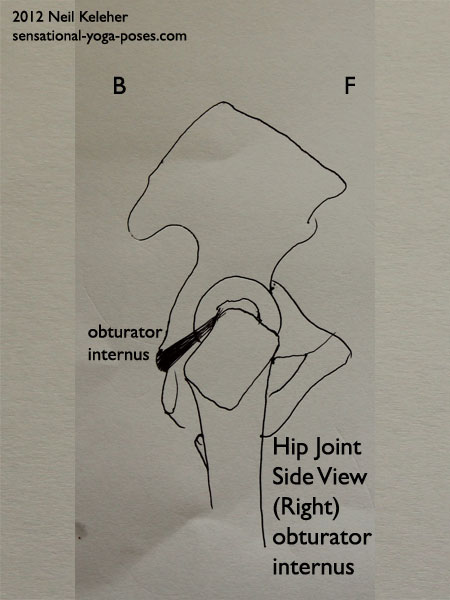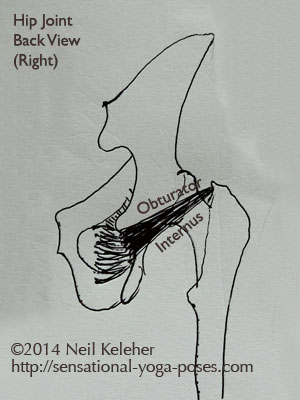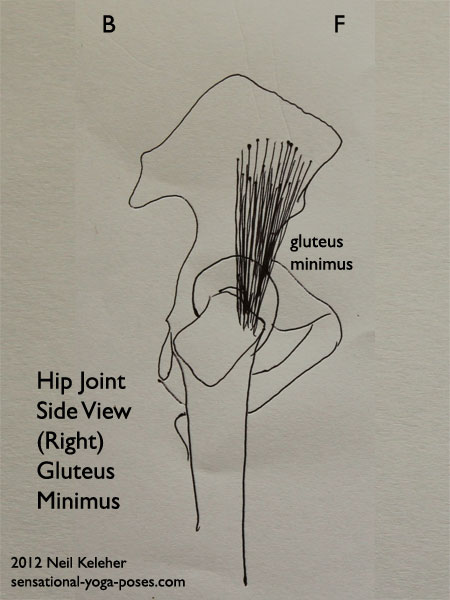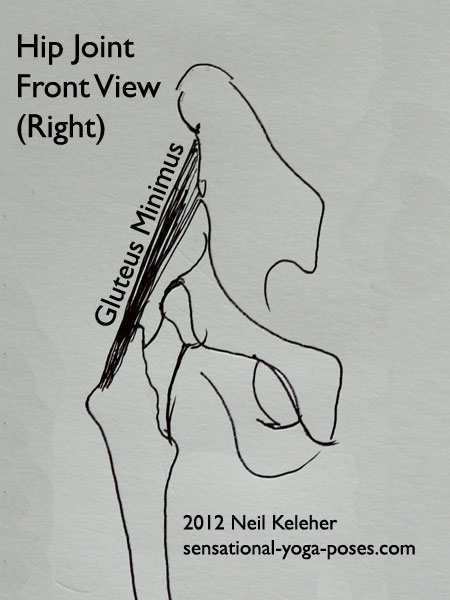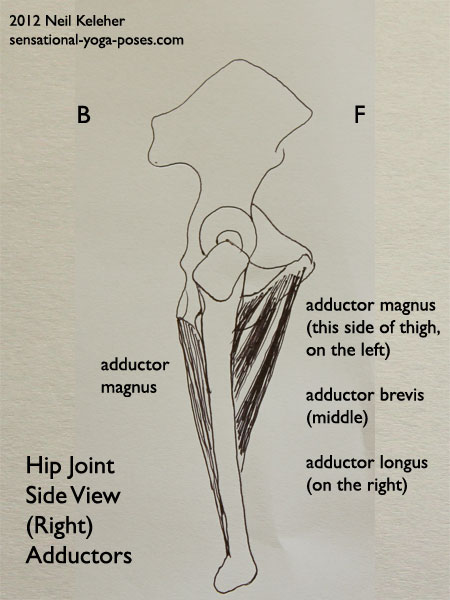The Single Joint hip flexors
A look at the hip flexors that work solely on the hip joint
On page cat links
Gluteus minimus
Rather than stretching all the way to the knee (as the rectus femoris, sartorius and the tensor fascia latae do) or rather than attaching to a potentially changeable structure like the lower back (as the psoas does) most of the single joint hip muscles attach close to the hip joint and have angles of attachment that give them much better leverage for tilting the pelvis forwards relative to the thigh bone.
Not only that, these muscles (to a large extent) aren't dependent on whether the knee is straight or bent, or on whether the lumbar spine is curved backwards, bent forwards or held straight.
All that is required is an awareness of the thigh and pelvis, and for one or the other of these to be held stable so that the single joint hip flexors have a stable foundation from which to work. They can then either tilt the pelvis forwards relative to the thigh or swing the thigh forwards relative to the pelvis.
Reference Points
Knowing some reference points on the pelvis can make it easier to learn to feel and control the hip flexor muscles.
- The pubic bone is perhaps one of the most easy to identify landmarks of the pelvis.
- The sitting bones are also easy to identify (you feel them when you are sitting down.)
- Attaching the pubic bone to the sitting bones are the ischiopubo ramii. You can think of the ischio puboramii as being like the rockers of a rocking chair.
- Just above and behind the sitting bones are the ischio tuberosities.
- And just above these are the ischial spines. (This separates the upper sciatic notch from the lower sciatic notch. The obturator internus passes through the lower sciatic notch, the piriformis passes through the upper. Note that the piriformis isn't a hip flexor.)
- At either side of the top of the pelvis are the iliac crests. I like to think of them simply as the hip crests.
Reference Positions (Not the Anatomical Position)
Rather than using the standard anatomical position as a reference I'm going to invent a reference position.
The Standing Reference Position
The first position is standing with feet hip or shoulder width apart, feet and knees pointing straight ahead and upper body horizontal. The hands are beneath the shoulders and are resting on the floor or blocks.
The assumption is that the hip extensors are flexible enough to allow the pelvis to tilt further forwards from this position.
Weight is even on both feet and the arms support the weight of the upper body.
The Seated Reference Position
A variation is to sit with the legs straight and hip width and the torso vertical with hands "resting" on the floor.
In either case, the single joint hip flexors can be used to tilt the pelvis forwards relative to the thighs. Meanwhile the hip extensors offer just enough tension so that the single joint hip flexors have something to work against.
Illiacus
The iliacus "originates" on the inside of the pelvic bowl.
It wraps around the front of the pelvis and then reaches down and back to attach just below the lesser trochanter. In the seated reference position, this muscle pulls the top of the pelvis forwards and down.
Because it folds around the pelvis, this may give the muscle extra leverage. In addition, it attaches to a large portion of the inside of the pelvis giving it even more leverage.
Pectineus
Pectinus has a similiar angle of attachment as the iliacus but instead of starting at the inside of the pelvis it attaches to the outside of the pelvis.
In the seated reference position this muscle can be thought of as pulling down (and back) on the pubic bone.
Obturator Externus
Obturator externus originates at the sides of the bottom of the pelvis, behind the pubic bone. It passes under the neck of the thigh bone, wraps around the back of the neck.
Because of the way it wraps around the neck, my feeling is that this muscle still has room to tilt the pelvis forwards even when the pelvis is tilted forwards relative to the thigh. Activating this muscle can feel like you are pulling the pubic bone down and back in the seated position.
Obturator Internus and Gemelli
The obturator internus like the iliacus originates on the inside of the pelvis. However this hip flexor attaches to the lower back portion of the inner pelvis.
It folds around the pelvis at the lower sciatic notch. It attaches to the inside of the greater trochanter, where it joins the neck of the thigh bone.
This muscle is"joined" by the gemelus superior and inferior. The superior muscle originates from the ischial spine. The inferior muscle originates from the top of the ischial tuberosity.
In the seated reference position these muscles act to pull the sitting bones up.
Gluteus Minimus
Gluteus minimus originates on the outside of the upper front portion of the pelvis. Where the iliacus is on the inside, this hip flexor (more or less) is on the outside.
And like the iliacus the gluteus minimus pulls the top of the pelvis forwards and down in the seated reference position.
Adductors
Along with the pectineus and obturator internus, the adductors (adductor brevis, adductor longus and portions of the adductor magnus) can be used to pull the pubic bone down and back in the seated reference position.
Note that the adductor magnus has an attachment to the sitting bone. This portion of the muscle can actually be used to tip the pelvis backwards relative to the thighs.
Hip Flexing from the Standing Reference Position
In the standing reference position you can think of the illiacus and gluteus minimus pulling the front of of the pelvis down. The pectineus, obturator internus and adductors pull the pubic bone back, between the thighs.
The obturator internus and gemelli pull the sitting bones up.
How do you use these muscles to help deepen your forward bend? By drawing downards on the ASICs, downwards and rearwards on the pubic bone and upwards on the sitting bones.
Published: 2012 07 13
Updated: 2020 11 04
